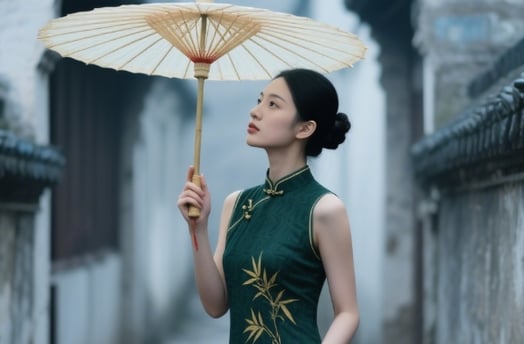Which ethnic group is the qipao
The qipao originated as Manchu attire during the Qing Dynasty, designed for practicality and reflecting their nomadic heritage. Mandated for Han Chinese women under Qing rule, it was adapted over time, blending Manchu and Han elements.
QIPAO KNOWLEDGE
6/27/20253 min read


Manchu Heritage: The Birth of the qipao
The story of the qipao begins in the 17th century, when the Qing Dynasty (1644-1912) was established by the Jurchen Manchus from northeastern China. In order to consolidate power, the Manchu rulers imposed their dress regulations on the Han people. The word "qipao" is derived from the Manchu words "qi" (qi, meaning "flag") and "pao" (pao, meaning "long robe"), referring to the Eight Banners military system that organized Manchu society.
Originally, the qipao was a utilitarian unisex garment worn by Manchu male and female cavalrymen. Its design features a straight, loose fit, ankle-length garment with narrow sleeves and a flat neckline. Manchu women paired it with a shapan (a pleated long skirt) and a qipao pankwu (a cloth-covered button) that fastened diagonally from the armpit to the side seam. The dress reflected the Manchus’ nomadic heritage and equestrian lifestyle, prioritizing mobility and warmth over beauty.
Cultural Assimilation and Integration with Han Culture
By Qing dynasty decree, Han men and women were required to wear Manchu clothing. For Han women, this meant abandoning the flowing, layered Hanfu of previous dynasties in favor of the qipao. However, cultural resistance remained. Many Han women modified the qipao to retain their traditional elements, such as loosening the silhouette, adding embroidered hems, or wearing an inner layer over the traditional ru skirt. Over time, the qipao evolved into a symbol of Qing authority, with designs varying by social class and region.
The Shanghai Revolution: From Imperial Robe to Modern Icon
The qipao’s transformation from Manchu dress to fashion statement began in 1920s Shanghai. As China’s most cosmopolitan city embraced Western influences, dressmakers began to reinterpret the qipao for the “crescent woman.” The qipao was shortened to the knee to flatter the figure and often worn with stockings and high heels. Collars became smaller and sleeves were shortened or eliminated entirely. Embellishments such as lace, beading, and bold prints reflected Art Deco trends, while bold high slits now symbolized female liberation.
The modern qipao transcended its Manchu roots to become a fusion of Chinese and Western aesthetics. It was worn by celebrities, actresses, and intellectuals, including the famous author Eileen Chang, who often wore custom qipaos with literary-inspired patterns. The qipao’s popularity spread to Chinese communities in Hong Kong, Taiwan, and Southeast Asia, solidifying its status as a pan-Chinese icon.
The Battle for National Identity: Contemporary Discourses on the qipao
Today, the qipao’s national affiliation remains complex. Though it has its roots in Manchu dress, its modern form is inseparable from 20th-century Chinese nationalism and global fashion. Some argue that the qipao’s Manchu heritage should be acknowledged, especially as China reckons with its multiethnic past. Others argue that the qipao, like Hanfu or Zhuang dress, belongs to all Chinese people—a manifestation of cultural integration.
In recent years, the Hanfu movement has sparked debate over “authentic” traditional dress, with proponents arguing for a revival of Han Chinese dress from before the Qing dynasty. Yet the qipao’s enduring popularity at weddings, festivals, and international events highlights its unique position as a bridge between China’s imperial past and modern identity.
Conclusion: A garment woven from many threads
The qipao is more than a Manchu robe, nor is it a Han invention—it is a living vessel of China’s multicultural interweaving. Its evolution from the steppes of Manchuria to the bustling streets of Shanghai mirrors the evolution of China itself: a country shaped by conquest, adaptation, and reinvention. Though the qipao originated from the Manchu people, today it belongs to all who wear it - a celebration of elegance, resilience, and the endless blend of tradition and modernity.
The qipao: Tracing its roots, Manchu cultural heritage and evolution
The qipao, a fitted silk dress with a high neckline and side slits, is often hailed as a symbol of Chinese femininity and elegance. However, its origins and cultural belonging (or "home") remain a controversial topic. To answer the question "Does the qipao belong to a specific ethnic group?" we must trace China's turbulent history, from the Manchu rulers of the Qing Dynasty to the cosmopolitan streets of 1920s Shanghai.


